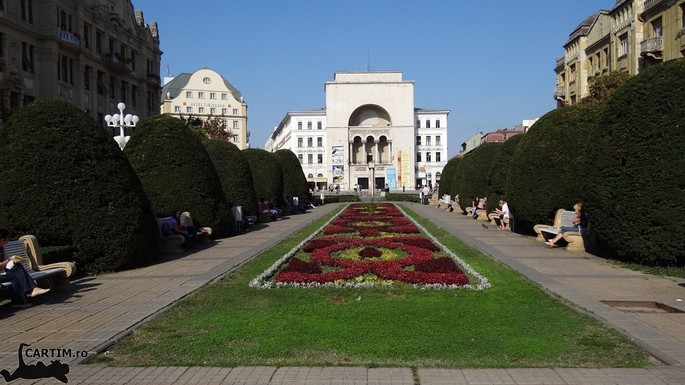Timisoara is the most eloquent example of a society where cultural diversity is a door to new dialogues, where the fact of understanding the other person means to move from a simple tolerance to the acceptance and the celebration of the diversity’s richness that exists in each of us.
Timisoara, the "Romania’s Gateway to Europe", is the capital of Timiş County and the most important urban center in the western part of Romania.
It's a city full of parks and green spaces, that’s why it is also called the "city of parks and flowers". There are a multitude of flowers, especially in the Roses Park , close to the city center, a park that boasts during its existence of over 1200 types of roses, reason for why Timisoara was called also, during the twentieth century, the "City of Roses".
The fame of this park is largely due to Wilhelm Mȕhle, a well-known Bohemian flower grower, who bought a home in 1876, currently the Casa cu Flori, and started a business with the plants with which embellished the whole city. He not only transformed his own home into a paradise of flowers, but also various public spaces of Timisoara, having the special merit for the decoration of the park of roses in which Wilhelm Mȕhle expounded about three hundred hybrids of roses, a beauty that attracted everyone's attention.
The park is open all year long, but the stunning open-air show is in the roses flowering time. During the summer the park also hosts a summer theater and a long series of famous festivals, including the Festival of Hearts, the Annual International Folk Festival which lasts five days, the Opera and Operetta Festival, in late August, then the city days of Timisoara, on September 15, or the Film Festival, the Wine Festival or "Bega Bulevard", and so on.
In the center of the city there is the Metropolitan Romanian Orthodox Cathedral, Timisoara, a construction finished in 1941, and is the largest church in Romania with its 90.5 meters height. Also in the interwar period is renewed the palace of culture - Palatul Culturii-, now home to Romanian National Opera Timişoara. Between the cathedral and the Opera lies the central square –The Victory Square - full of terraces and shops, and which gives access to other central squares the city, such as Liberty Square and Union Square.
Timisoara is an orderly and clean city, and has important buildings, places and monuments of high historical and architectural interest to visit that reflect the passing of here of various peoples, who have left a trace of their culture.
The main architectural style is the Baroque which intertwines harmoniously with oriental style.
The building that reflects more the oriental architectural expression is the Theresia Bastion, built in the mid of the 18th century, the first of the nine bastions built in that period and the only one that has not been demolished at the beginning of XX century. What is left is only a small part of what was the fortress designed after the Vauban model, a star-shaped fortification surrounded by three moated boundary, that could be filled with water. The entrance was made through the bascule bridges of the three doors - Viena, Petrovaradin and Ardeal, completely demolished in 1891-. Nowadays the bastion, or what is left, is a renovated structure that guest temporary exhibitions, clubs and various flea markets and events.





















